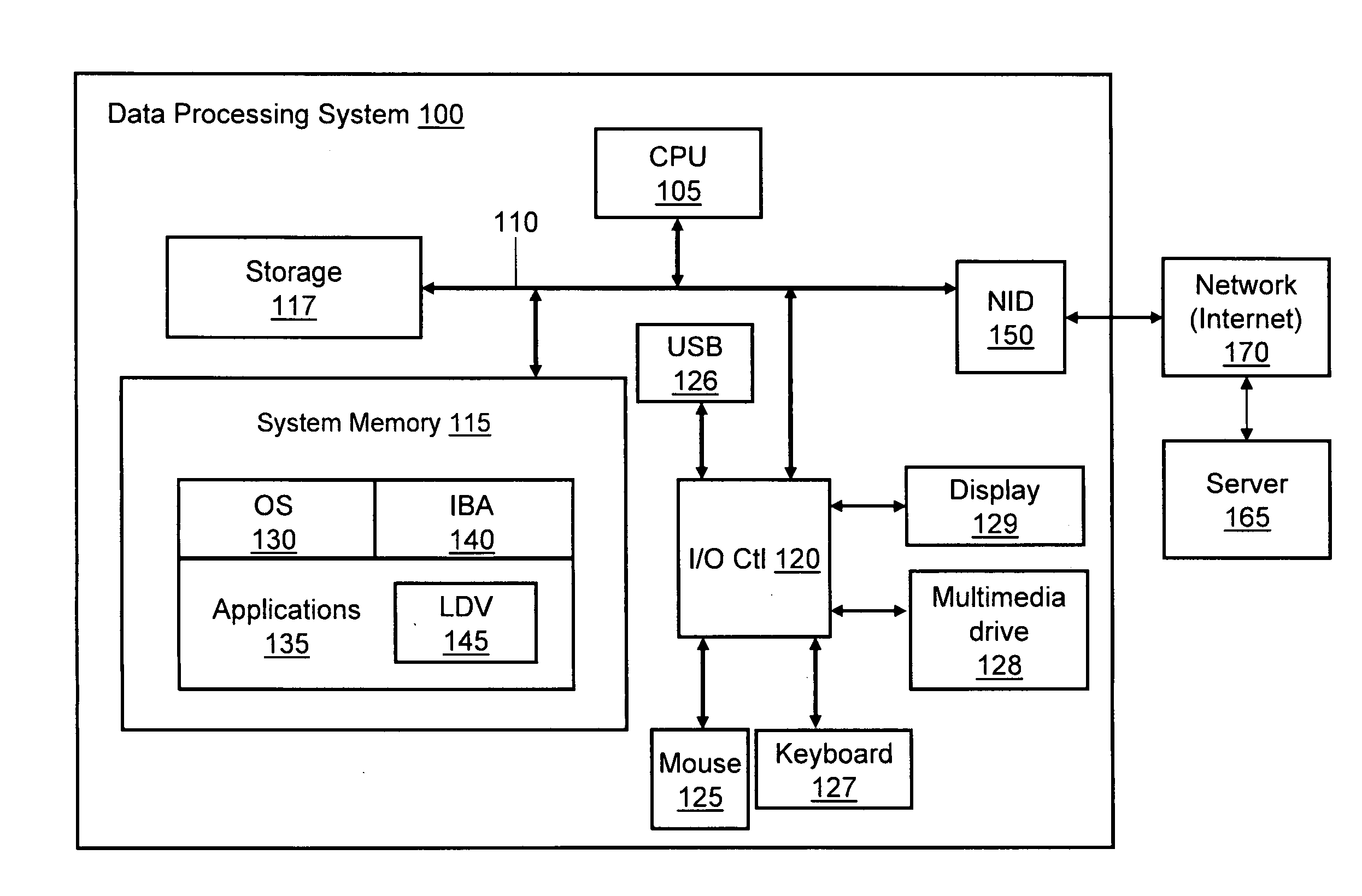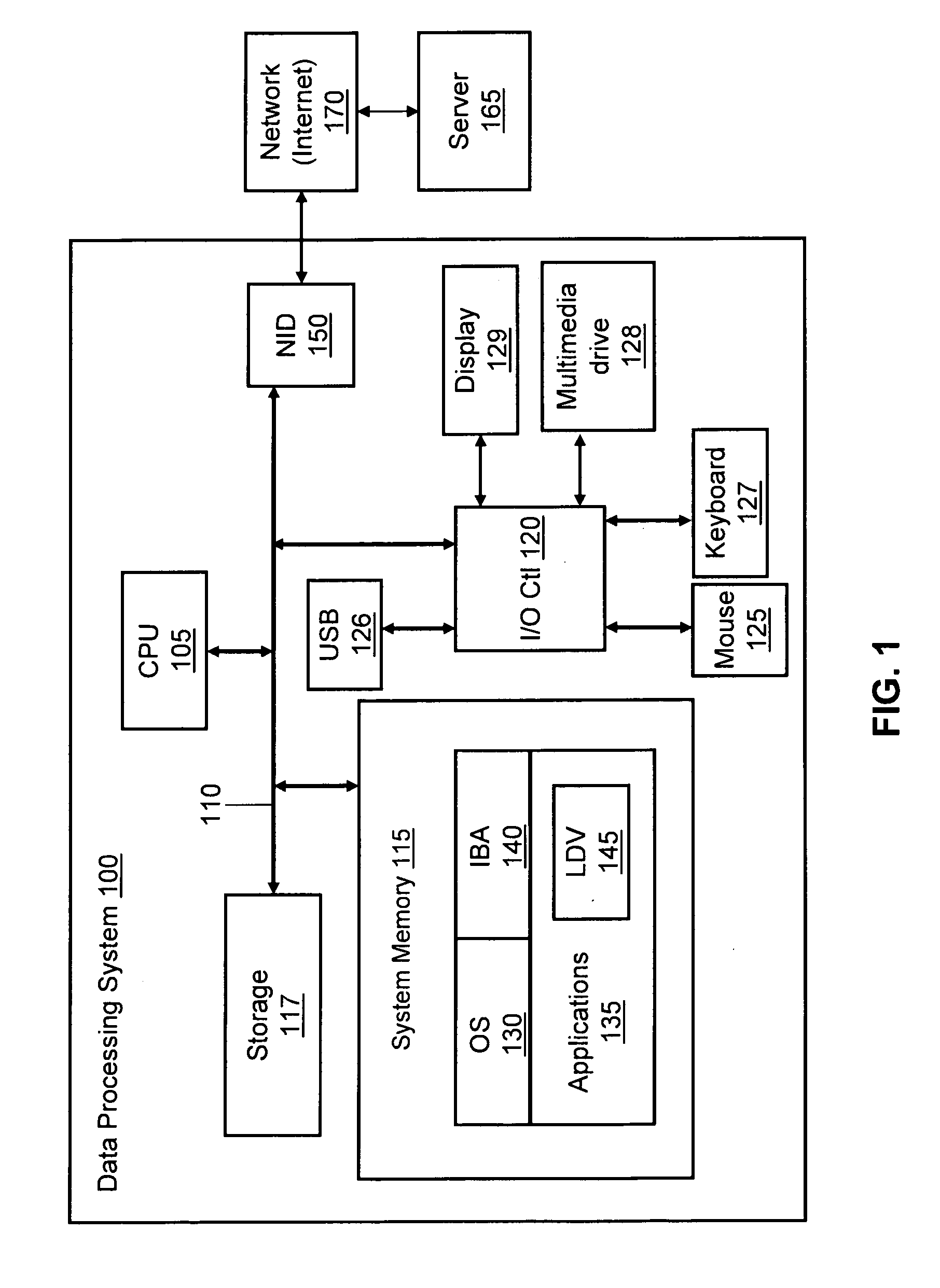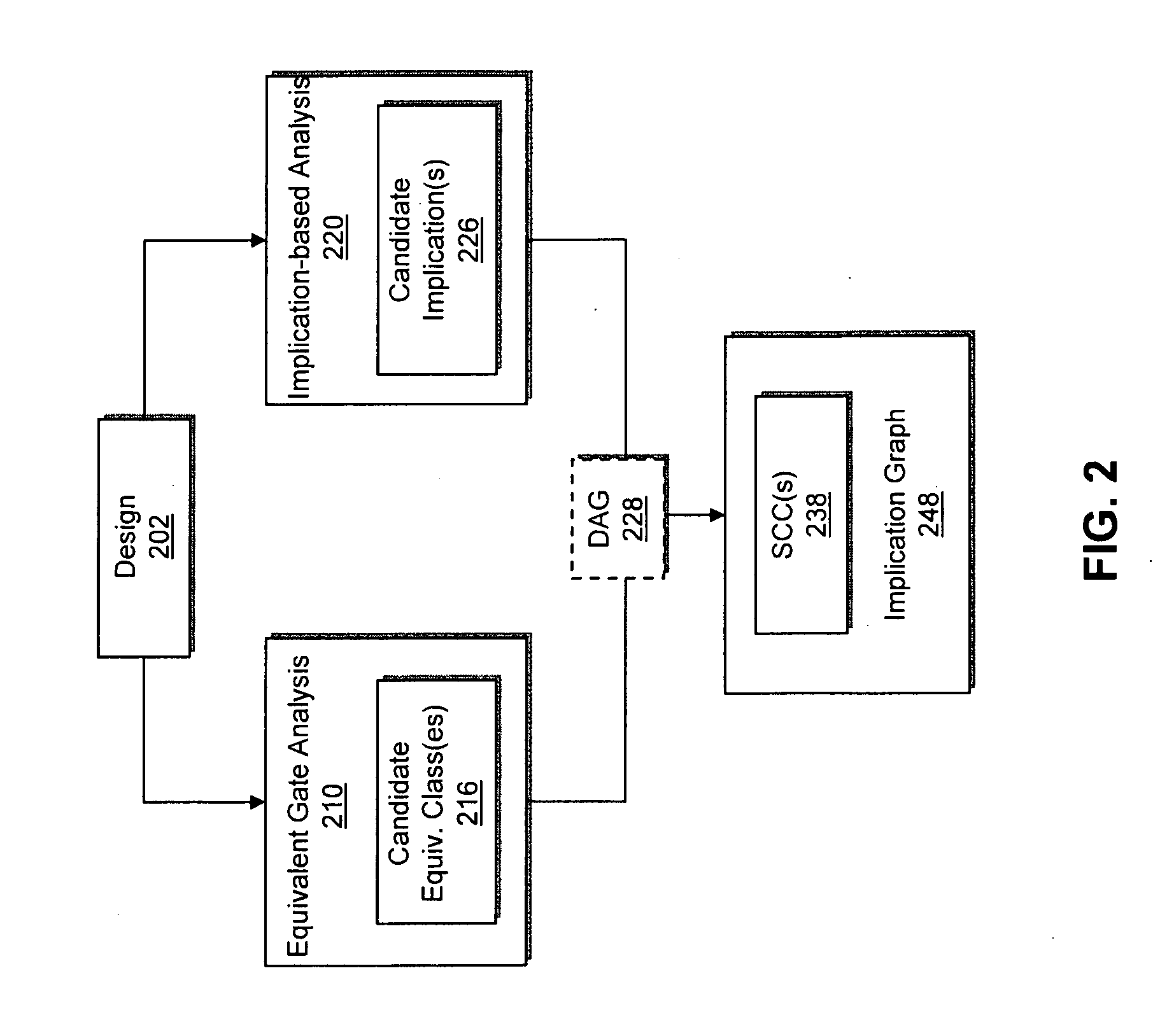Method for scalable derivation of an implication-based reachable state set overapproximation
a reachable state and set overapproximation technology, applied in the field of verification techniques, can solve problems such as loss of current methods for the computation of reachable state set overapproximation, computationally expensive process, and digital design verification
- Summary
- Abstract
- Description
- Claims
- Application Information
AI Technical Summary
Benefits of technology
Problems solved by technology
Method used
Image
Examples
Embodiment Construction
[0006]Disclosed are a method, a system and a computer program product for integrating implication-based analysis and equivalent gate analysis to maintain transitive reduction in an implication graph over a sequence of graph operations. One or more gates of a design are identified that are equivalent in all reachable states. Equivalent gates are assigned to an equivalence class when all gates within the equivalence class are equal. During the implication-based analysis the system determines when one or more implication paths are associated with the one or more equivalence classes, and an implication is generated at the implication path associated with the equivalence classes. A transitively reduced graph is received depicting the implications and equivalence classes of the design. When one or more operations are assigned to the transitively reduced graph, the graph is automatically adjusted to maintain transitive reduction.
BRIEF DESCRIPTION OF THE DRAWINGS
[0007]The invention itself, ...
PUM
 Login to View More
Login to View More Abstract
Description
Claims
Application Information
 Login to View More
Login to View More - R&D
- Intellectual Property
- Life Sciences
- Materials
- Tech Scout
- Unparalleled Data Quality
- Higher Quality Content
- 60% Fewer Hallucinations
Browse by: Latest US Patents, China's latest patents, Technical Efficacy Thesaurus, Application Domain, Technology Topic, Popular Technical Reports.
© 2025 PatSnap. All rights reserved.Legal|Privacy policy|Modern Slavery Act Transparency Statement|Sitemap|About US| Contact US: help@patsnap.com



